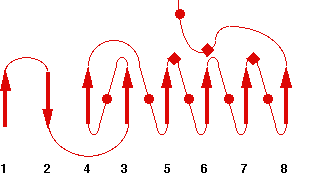4U2F
Name : Crystal structure of dienelactone hydrolase B-1 variant (Q35H, F38L, Y64H, Q110L, C123S, Y137C, Y145C, N154D, E199G, S208G and G211D) at 1.80 A resolution
Revelation date : 10-Dec-2014
Family : Dienelactone_hydrolase
Gene_locus : psepu-clcd1
PDB file : ESTHER: header of PDB entry RCSB: Full entry
Comment
Porter, J.L., Boon, P.L., Murray, T.P., Huber, T., Collyer, C.A., Ollis, D.L.
Ligand :
References (1)
| Title : Directed evolution of new and improved enzyme functions using an evolutionary intermediate and multidirectional search - Porter_2015_ACS.Chem.Biol_10_611 |
| Author(s) : Porter JL , Boon PL , Murray TP , Huber T , Collyer CA , Ollis DL |
| Ref : ACS Chemical Biology , 10 :611 , 2015 |
| Abstract : Porter_2015_ACS.Chem.Biol_10_611 |
| ESTHER : Porter_2015_ACS.Chem.Biol_10_611 |
| PubMedSearch : Porter_2015_ACS.Chem.Biol_10_611 |
| PubMedID: 25419863 |
| Gene_locus related to this paper: psepu-clcd1 |
Representative scheme of Prolylcarboxypeptidase structure and an image from PDBsum server

